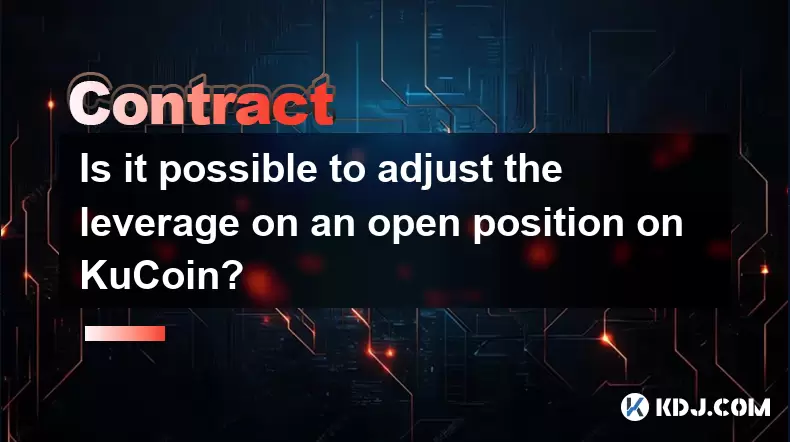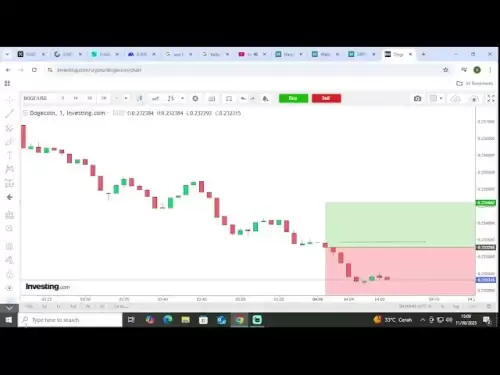-
 Bitcoin
Bitcoin $120300
1.41% -
 Ethereum
Ethereum $4296
2.75% -
 XRP
XRP $3.220
1.46% -
 Tether USDt
Tether USDt $0.9997
-0.04% -
 BNB
BNB $801.6
0.14% -
 Solana
Solana $179.9
0.22% -
 USDC
USDC $0.9998
-0.01% -
 Dogecoin
Dogecoin $0.2302
-0.24% -
 TRON
TRON $0.3405
-0.39% -
 Cardano
Cardano $0.7965
0.53% -
 Hyperliquid
Hyperliquid $44.80
2.57% -
 Chainlink
Chainlink $21.95
2.94% -
 Stellar
Stellar $0.4438
1.68% -
 Sui
Sui $3.767
-1.42% -
 Bitcoin Cash
Bitcoin Cash $584.4
3.24% -
 Hedera
Hedera $0.2554
-0.59% -
 Ethena USDe
Ethena USDe $1.001
-0.02% -
 Avalanche
Avalanche $23.57
0.00% -
 Litecoin
Litecoin $126.6
4.64% -
 Toncoin
Toncoin $3.339
0.94% -
 UNUS SED LEO
UNUS SED LEO $9.001
-0.49% -
 Shiba Inu
Shiba Inu $0.00001320
-0.92% -
 Uniswap
Uniswap $10.84
3.36% -
 Polkadot
Polkadot $3.945
-1.39% -
 Cronos
Cronos $0.1663
4.77% -
 Ethena
Ethena $0.8136
8.48% -
 Dai
Dai $0.0000
0.00% -
 Bitget Token
Bitget Token $4.391
-0.51% -
 Monero
Monero $268.0
0.80% -
 Pepe
Pepe $0.00001169
-1.57%
How to verify the stability of the strategy?
Independent verification enhances strategy stability by ensuring its design and implementation align with expectations, providing investors with confidence in its reliability.
Feb 22, 2025 at 12:07 am

Key Points:
- Evaluating historical performance
- Assessing risk-adjusted returns
- Stress testing the strategy
- Monitoring real-time performance
- Obtaining independent verification
Article:
1. Evaluating Historical Performance
Assessing the stability of a trading strategy involves analyzing its historical performance to identify patterns and evaluate its consistency. Long-run data provides valuable insights into the strategy's ability to generate returns under varying market conditions.
- Examine the strategy's ROI (return on investment), Sharpe ratio, and maximum drawdown to gauge its profitability and risk profile.
- Compare the strategy's performance to a suitable benchmark or similar strategies to understand its relative strength and weaknesses.
- Identify periods of market volatility or adverse conditions to assess how the strategy performs under stress.
2. Assessing Risk-Adjusted Returns
Risk-adjusted returns provide a more comprehensive measure of a strategy's effectiveness by combining its return potential and volatility. These metrics help investors identify strategies that generate superior returns while managing risk.
- Calculate the strategy's Sharpe ratio, which divides the excess return by the standard deviation. A higher Sharpe ratio indicates better risk-adjusted returns.
- Evaluate the strategy's Sortino ratio, which measures the excess return relative to the downside deviation. Strategies with a higher Sortino ratio have better risk-adjusted returns in adverse market conditions.
3. Stress Testing the Strategy
Stress testing involves simulating extreme market conditions to evaluate how the strategy performs under these scenarios. This helps investors assess the strategy's resilience and identify potential vulnerabilities.
- Simulate various market scenarios, including sharp price declines, high volatility, and extreme liquidity events.
- Analyze the strategy's performance during these simulations and identify any weaknesses or potential areas for improvement.
- Refine the strategy's parameters and risk management rules based on the results of the stress tests.
4. Monitoring Real-Time Performance
Regularly monitoring the strategy's real-time performance is essential to identify any deviations from historical expectations. This allows investors to proactively adjust the strategy or intervene if needed.
- Track the strategy's key performance metrics, such as ROI, Sharpe ratio, and maximum drawdown.
- Compare the strategy's performance to its historical benchmarks or similar strategies.
- Identify any material deviations and consider adjusting the strategy's parameters or risk management measures accordingly.
5. Obtaining Independent Verification
Engaging an independent third party to verify the strategy's design and implementation can enhance transparency and credibility. This review process helps investors gain confidence in the strategy's stability.
- Select a reputable and experienced third party with expertise in strategy evaluation.
- Provide the third party with detailed documentation on the strategy's design, trading rules, and risk management practices.
- Obtain a written report summarizing the verification findings and any recommendations for improvement.
FAQs:
Q: What are the most important metrics to consider when evaluating strategy stability?
A: Key metrics include ROI, Sharpe ratio, Sortino ratio, and maximum drawdown.
Q: How often should I monitor the strategy's real-time performance?
A: Regular monitoring is recommended, with the frequency depending on the strategy's trading frequency and market conditions.
Q: Can I use backtesting to verify the strategy's stability?
A: Backtesting can provide insights into historical performance, but it is not a substitute for stress testing and real-time monitoring.
Q: How do I select the right third party for independent verification?
A: Look for reputable firms with experience in strategy evaluation and a deep understanding of the cryptocurrency market.
Disclaimer:info@kdj.com
The information provided is not trading advice. kdj.com does not assume any responsibility for any investments made based on the information provided in this article. Cryptocurrencies are highly volatile and it is highly recommended that you invest with caution after thorough research!
If you believe that the content used on this website infringes your copyright, please contact us immediately (info@kdj.com) and we will delete it promptly.
- DYDX Price Stays Afloat: Navigating Neutral Momentum with Technical Indicators
- 2025-08-11 20:50:12
- Superman Takes Flight: A Deep Dive into the Comic Program and Coin Medals
- 2025-08-11 20:30:12
- JasmyCoin's Bullish Momentum: Riding the Daily Gain Wave
- 2025-08-11 21:10:12
- Shiba Inu's Comeback Trail and the Meme Coin Mania: Can $SHIB Deliver a 12,000x Return?
- 2025-08-11 18:30:11
- Proof of Trust, Transparency, and User Safety: Keeping Crypto Real
- 2025-08-11 18:50:12
- Pudgy Penguins, Bitcoin Penguins, and the $22M Meme Coin Mania: A New York Perspective
- 2025-08-11 17:10:11
Related knowledge

Is it possible to adjust the leverage on an open position on KuCoin?
Aug 09,2025 at 08:21pm
Understanding Leverage in KuCoin Futures TradingLeverage in KuCoin Futures allows traders to amplify their exposure to price movements by borrowing fu...

What cryptocurrencies are supported as collateral on KuCoin Futures?
Aug 11,2025 at 04:21am
Overview of KuCoin Futures and Collateral MechanismKuCoin Futures is a derivatives trading platform that allows users to trade perpetual and delivery ...

What is the difference between realized and unrealized PNL on KuCoin?
Aug 09,2025 at 01:49am
Understanding Realized and Unrealized PNL on KuCoinWhen trading on KuCoin, especially in futures and perpetual contracts, understanding the distinctio...

How does KuCoin Futures compare against Binance Futures in terms of features?
Aug 09,2025 at 03:22am
Trading Interface and User ExperienceThe trading interface is a critical component when comparing KuCoin Futures and Binance Futures, as it directly i...

How do funding fees on KuCoin Futures affect my overall profit?
Aug 09,2025 at 08:22am
Understanding Funding Fees on KuCoin FuturesFunding fees on KuCoin Futures are periodic payments exchanged between long and short position holders to ...

What is the distinction between mark price and last price on KuCoin?
Aug 08,2025 at 01:58pm
Understanding the Basics of Price in Cryptocurrency TradingIn cryptocurrency exchanges like KuCoin, two key price indicators frequently appear on trad...

Is it possible to adjust the leverage on an open position on KuCoin?
Aug 09,2025 at 08:21pm
Understanding Leverage in KuCoin Futures TradingLeverage in KuCoin Futures allows traders to amplify their exposure to price movements by borrowing fu...

What cryptocurrencies are supported as collateral on KuCoin Futures?
Aug 11,2025 at 04:21am
Overview of KuCoin Futures and Collateral MechanismKuCoin Futures is a derivatives trading platform that allows users to trade perpetual and delivery ...

What is the difference between realized and unrealized PNL on KuCoin?
Aug 09,2025 at 01:49am
Understanding Realized and Unrealized PNL on KuCoinWhen trading on KuCoin, especially in futures and perpetual contracts, understanding the distinctio...

How does KuCoin Futures compare against Binance Futures in terms of features?
Aug 09,2025 at 03:22am
Trading Interface and User ExperienceThe trading interface is a critical component when comparing KuCoin Futures and Binance Futures, as it directly i...

How do funding fees on KuCoin Futures affect my overall profit?
Aug 09,2025 at 08:22am
Understanding Funding Fees on KuCoin FuturesFunding fees on KuCoin Futures are periodic payments exchanged between long and short position holders to ...

What is the distinction between mark price and last price on KuCoin?
Aug 08,2025 at 01:58pm
Understanding the Basics of Price in Cryptocurrency TradingIn cryptocurrency exchanges like KuCoin, two key price indicators frequently appear on trad...
See all articles

























































































